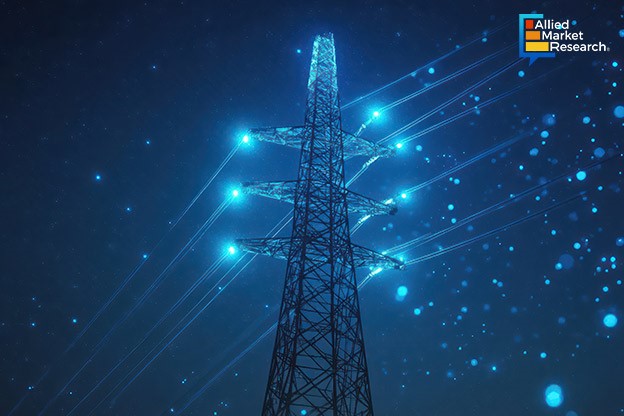How Is Wireless Power Transmission Technology Transforming Energy Transfer?

20 Feb
2025
Highlights:
- A brief on wireless power transmission technology
- Latest technological advancements in this sector
- Promising use cases of these wireless systems
- Notable acquisitions by leading players in the domain
Wireless power transfer, also known as wireless energy transmission, refers to the transmission of electrical energy without the use of wires as a physical link. This technology has become widely adopted across various applications, including electric toothbrushes, smartphones, and automated guided vehicles in factories. In these energy systems, there are transmitter devices powered by electricity that generate a time-varying electromagnetic field. These devices further transmit power across space to receiver devices.
Wireless power transfer is widely used for charging mobile devices like smartphones, electric toothbrushes, electric vehicles, and certain medical devices. Nowadays, continuous research and development in this field aims to expand its capabilities to new applications. For instance, this technology is expected to power IoT devices, industrial machinery, and long-range power transmission for space-based solar power systems. The main goal of utilizing these devices is to deliver a convenient and reliable power supply without the need for physical connections.
Innovations in wireless power transmission driving the sector’s growth
The wireless power transmission industry is experiencing prominent growth because of rapid technological advancements. Companies like Reach Power and defense organizations are advancing radiofrequency and laser-based power beaming to wirelessly charge drones, robots, and military equipment. Moreover, global organizations such as NASA are working on orbital solar farms that collect energy in space and wirelessly transmit it to Earth.
On the other hand, emerging technologies enable IoT sensors and smart city infrastructure to operate without batteries by harvesting energy from Wi-Fi, Bluetooth, and cellular signals. This approach converts ambient energy into power for devices, either for direct use or storage. It enhances sustainability and reduces maintenance in remote or hazardous locations. In addition, long-range wireless charging is widely used in factory automation and industrial IoT. This further allows automated guided vehicles and robotics to receive power wirelessly over longer distances.
Moreover, the increasing integration of AI algorithms in wireless power transmission systems has created wider opportunities for the sector. These AI-powered algorithms have improved energy efficiency, enhanced beamforming accuracy, and increased adaptive frequency tuning. AI-driven wireless power allocates energy dynamically, optimizing delivery based on device needs and power demand.
Diverse applications of wireless power transmission across multiple sectors
These wireless systems are widely penetrating various sectors with a range of innovative applications. This advanced power transmission technology is increasingly integrated into electric vehicles for both stationary and dynamic charging solutions. This helps reduce customer anxiety and makes it easier for vehicles to charge, whether they are parked or moving.
Furthermore, the adoption of inductive charging technologies, such as Qi wireless charging, has expanded to power devices like smartphones, laptops, and smartwatches. Researchers are continuously bringing advancements in these technologies, aiming to increase power output and enhance future capabilities that are expected to support larger devices.
In addition, these power transmission systems are integrated into smart home technologies, enabling non-contact charging solutions for everyday devices. This includes advancements in interoperability between wireless chargers and devices, allowing for multi-device charging capabilities.
Reach Power acquired USSOCOM to enhance defense tech with wireless power
In June 2024, Reach Power, a leading wireless Power-at-a-Distance company announced its acquisition of United States Special Operations Command (USSOCOM) to offer comprehensive insights and operational guidance to the government and military veterans. Through this agreement, Reach Power aims to deliver cutting-edge power-beaming solutions to the defense and intelligence community. The company envisions providing wireless power-beaming systems that support persistent operations of drones, robotics, and sensors. Its wireless power transfer technology uses radiofrequency energy to power and charge various electronic devices, from small unmanned aerial systems to ground robots and hard-to-reach sensors. This technology reduces the dependency on batteries and the necessity for manual battery swaps.
Wrapping up
Wireless power transmission is revolutionizing energy delivery across several sectors, enhancing efficiency and convenience. With advancements in AI, long-range charging, and space-based power solutions, the technology is expected to create wider opportunities across different sectors including consumer electronics, defense and industrial automation. Furthermore, the rise of effective charging systems for modern EV manufacturing is expected to boost the growth of the industry in the coming years.
To get detailed insights into the latest technological advancements in the landscape of wireless power transmission, feel free to talk to our industry specialists today!

Rosy Behera
Author's Bio- Rosy Behera holds a bachelor’s degree in Electrical and Electronics Engineering and now she is a content writer by profession. She loves to portray her thoughts and ideas with a nice command of words. Grabbing an audience with her creative write-ups is one of her biggest assets so far. Apart from writing, she is a certified “Odisi” dancer and has done Gardharva in Drawing, Painting, and Arts. She always explores new things through travel and is a big foodie.
Avenue: Entire Library membership of Allied Market Research Reports at your disposal
- Avenue is an innovative subscription-based online report database.
- Avail an online access to the entire library of syndicated reports on more than 2,000 niche industries and company profiles on more than 12,000 firms across 11 domains.
- A cost-effective model tailored for entrepreneurs, investors, and students & researchers at universities.
- Request customizations, suggest new reports, and avail analyst support as per your requirements.
- Get an access to the library of reports at any time from any device and anywhere.
Related Post
-
How are Submarine Cables Transforming Global Connectivity with Enhanced User Experience?
-
Endoscopy Procedures: Transformations in Techniques and Applications
-
AI-Powered Video Analytics: How the Product Actually Works for enterprises
-
Painting Robots: Transforming Precision Coating and Creative Applications
-
Innovations in Pharmacovigilance Systems Advancing Patient Safety
-
Understanding Edge Security: Keeping Data Safe Near the Source
-
Exploring the Use and Advancements of 3D Laser Scanners in Professional Applications
-
Reinforcing Industrial Controls with Smarter Tools and Training








